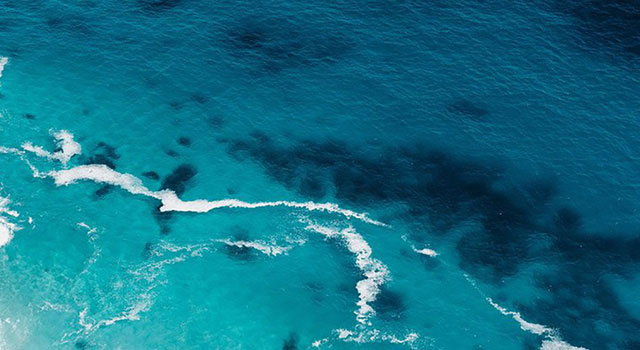70km of sand dunes date from the mysterious preserved Ice Age at the bottom of the sea
According to the latest study, the dunes identified in the last Ice Age are still hidden in the ocean off the east coast of Australia.
How did these ancient dunes exist to this day? It is a geological mystery. Scientists have hypothesized that these strange sand dunes had . hardened into stone before being submerged by seawater about 12,000 years ago.
Ancient sand dunes stretch 70km between Fraser Island and Moreton Island in Queensland. The researchers said it initially looked very much like sand dunes covering Fraser Island today.

Off the east coast of Australia there exist more than 70km of ancient dunes still exist.
"I think the most interesting thing is which mechanism allows them to be preserved so well," said researcher Tiago Passos from the University of Sydney.
Ancient dunes were first discovered by researchers thanks to images from the sonar system during the expedition. But the new study has identified these structures at a depth of 60m under water and about 10-15m high.
However, there is an attractive difference in these ancient dunes that researchers have discovered the presence of calcium carbonate, instead of quartz, inside the particles.
Researchers believe that calcium carbonate is important in chemical reactions that harden and preserve ice, allowing a process called membrane formation to take place.
Based on samples collected and analyzed by researchers, submerged sand grains are thought to be welded together before being buried by the waves for thousands of years.
With modern sand, like sand on Fraser Island, there is no possibility of meeting the same fate as the ancient sand dunes. The researchers say the cause is simple because they have different chemical components.
- Mysterious blue sand dunes on Mars
- Sand dunes on Titan are exactly the same on Earth
- What do the ghost dunes on Mars reveal about life?
- 5 threats to coastal sand dunes
- Sand dunes are leeches on Mars
- The sand pit
- Detailing the Moon's sand dunes Saturn
- The culprit follows extruded sand dunes like the seabed
- Explore the world-like sand hill in Thousand and One Nights in Japan
- Decipher the mystery of the Morse code message on Mars
- Spectacular waves on the rocky mountains
- NASA decodes a mystery on Mars
 Surprised: Fish that live in the dark ocean still see colors
Surprised: Fish that live in the dark ocean still see colors Japan suddenly caught the creature that caused the earthquake in the legend
Japan suddenly caught the creature that caused the earthquake in the legend A series of gray whale carcasses washed ashore on California's coast
A series of gray whale carcasses washed ashore on California's coast Compare the size of shark species in the world
Compare the size of shark species in the world